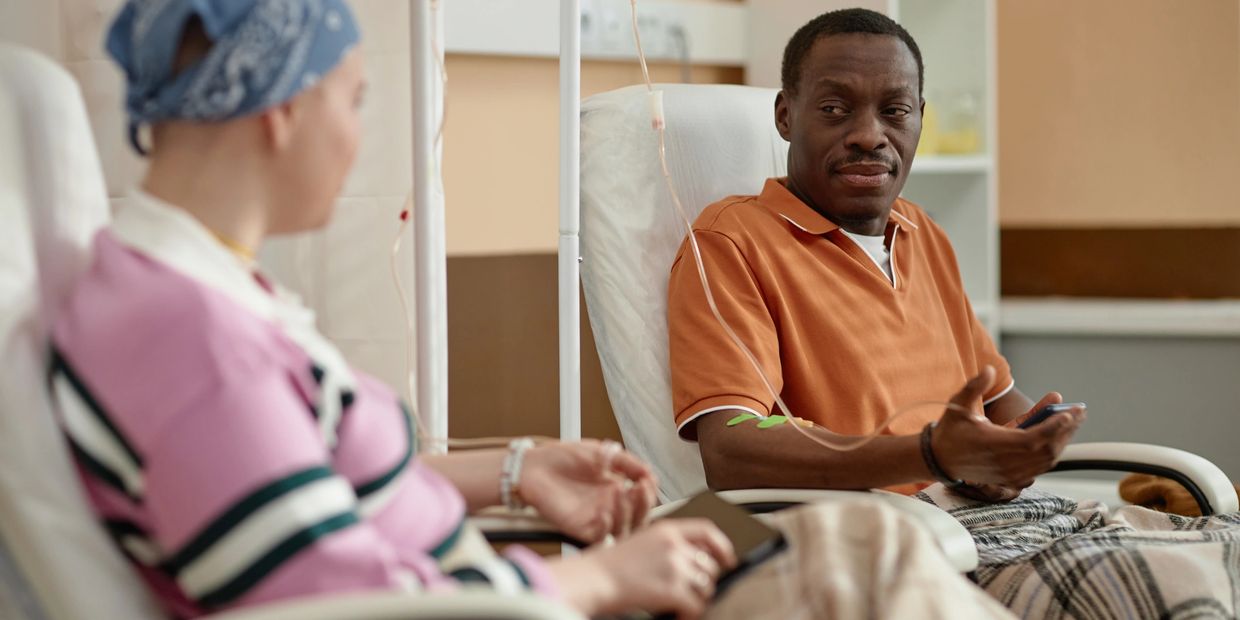Signed in as:
filler@godaddy.com
Signed in as:
filler@godaddy.com

Our bodies have normal cells that work naturally, guided by DNA—like instructions for what each cell should do. Sometimes, this DNA gets damaged or changes, causing cells to grow in an unusual and uncontrolled way. This is called cancer. Certain harmful things, called carcinogens, can damage DNA and lead to cancer. Carcinogens can come from physical sources like radiation or sunlight, chemicals like tobacco, alcohol, or pollution, and even viruses or bacteria like HPV, hepatitis B, or Epstein-Barr. We can be exposed to them through what we eat, breathe, or touch.
How many Cancers are there?
There are more than 200 different kinds of cancer. They are named after the kind of cell that is damaged, and where in the body it happens.
What age do people get cancer and can it be inherited?
Cancer can affect anyone, no matter their age. It's not usually passed directly from your parents, but sometimes their DNA can increase your risk. Even if you inherit this risk, it doesn't mean you'll definitely get cancer. As we age, we’re exposed to more things in the environment, products, or food that can cause cancer. Plus, our cells may not repair themselves as well over time, which can also raise the risk.
What are the main cell types that develop into Cancer?
Cancer gets its name from the type of cell it affects and where it is found in the body. The name usually ends with "oma," which is Greek for swelling or tumor.
What is Cancer Staging?
Staging helps doctors understand how much cancer is in the body and where it has spread. Stage I means the cancer is small and in one place. Stages II and III mean it's larger and may have spread to nearby areas or lymph nodes. Stage IV means it has spread to other parts of the body. Doctors use the TNM system to describe this: T is the size of the main tumor, N shows if it’s in the lymph nodes, and M tells if it has spread to other areas. A higher stage doesn’t always mean someone is very sick—it just helps guide treatment.
Malignant tumors grow quickly and can spread to other parts of the body. Benign tumors grow slowly, have clear edges, and usually stay in one place.
What is Genetic Testing?
This special test checks your DNA for changes in genes, proteins, enzymes, or chromosomes. It helps find out if you have cancer, your risk of getting it, or if you could pass it to your children. It also helps doctors choose the best treatment for you.
What is a biopsy or pathology report?
Sometimes, doctors take a small sample of tissue from a problem area in your body. They examine it in a lab to learn more and help diagnose what’s happening.
What are the different types of treatment for cancer?
Your medical team will make a plan for your treatment based on what is going on with your body. This plan might include one or more of these choices:
What are things that can reduce the risk of developing cancer or improve cancer outcomes?
Avoid things that can harm your body, damage your DNA, or slow down healing. Don’t smoke, limit sun and radiation exposure, avoid alcohol and drugs, and stay away from harmful chemicals and pollution. Eat natural foods like fruits, vegetables, nuts, and whole grains, and limit processed foods and sugary drinks. Drink plenty of water—dehydration can lead to health problems. Use gentle soaps and lotions with a pH of 5.0–6.0 to keep your skin healthy. Stay active to build strength, maintain a healthy weight, and prevent illness. Move often, avoid sitting too long, manage stress, and get enough sleep to support healing and overall health.
Schedule an educational class or wellness service today and take the first step towards better health.
Files coming soon.
Copyright © 2023-2025 ONThrive Foundation Inc. All Rights Reserved. This site is intended solely for educational use and does not provide diagnoses, treatments, or personalized medical advice.
ONThrive Foundation Inc is a 501(c)(3) tax exempt non-profit organization. EIN: 93-1617162
Be kind to yourself and the journey